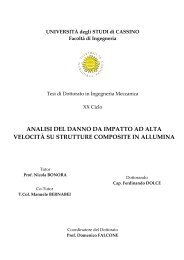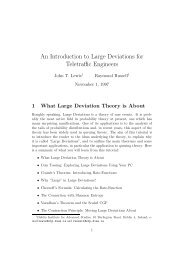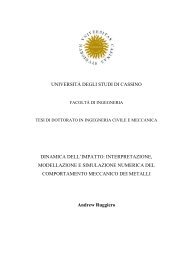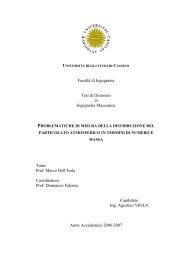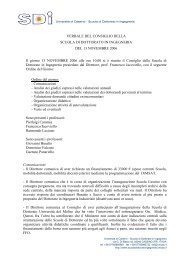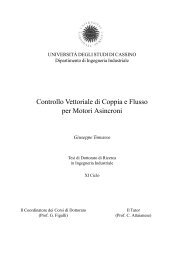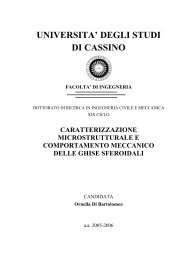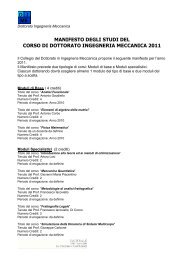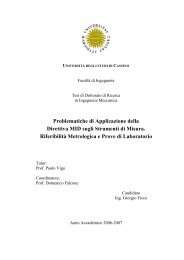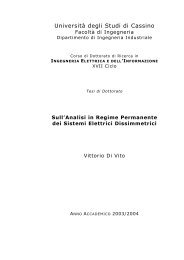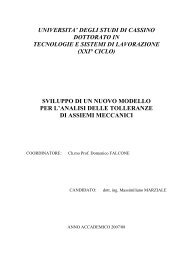Finite Strain Shape Memory Alloys Modeling - Scuola di Dottorato in ...
Finite Strain Shape Memory Alloys Modeling - Scuola di Dottorato in ...
Finite Strain Shape Memory Alloys Modeling - Scuola di Dottorato in ...
Create successful ePaper yourself
Turn your PDF publications into a flip-book with our unique Google optimized e-Paper software.
5 FINITE STRAIN CONSTITUTIVE MODEL:Numerical Procedure5.1 IntroductionThe derived material model <strong>in</strong> the framework of f<strong>in</strong>ite stra<strong>in</strong> is implemented <strong>in</strong>to thef<strong>in</strong>ite element program FEAP (Zienkiewicz and Taylor, 1991). A numerical-<strong>di</strong>scretetime <strong>in</strong>tegration scheme is adopted because of the strongly non-l<strong>in</strong>ear form of theevolution equations. In particular, the time <strong>in</strong>tegration is performed adopt<strong>in</strong>g abackward-Euler implicit procedure (Simo, 1992; 1998a; 1998b) and the <strong>in</strong>elasticstra<strong>in</strong> tensorC trelated to the phase transformation occurr<strong>in</strong>g <strong>in</strong> the SMA isevaluated. The time <strong>in</strong>terval of <strong>in</strong>terest is sub<strong>di</strong>vided <strong>in</strong> sub<strong>in</strong>crements and theevolutive problem is solved over a generic <strong>in</strong>terval [ , ]tntn + 1, be<strong>in</strong>g t > n+ 1t . The nquantities at time n are denot<strong>in</strong>g by the pedex n while the <strong>in</strong>dex n + 1 of allquantities evaluated at the time tn + 1is omitted.Once the solution at the time t nis known as well as the stra<strong>in</strong> tensor C at time tn + 1,the stress history is computed from the stra<strong>in</strong> history by means of a procedure knownas return-map.5.1.1 Exponential MapIn order to obta<strong>in</strong> the time <strong>in</strong>tegration of the evolutive equation given by formulas(4.40), some considerations have to be done. An exponential map is adopted <strong>in</strong>which the spectral decomposition is used to compute an exponential function (Reeseand Christ, 2008).In particular, equation (4.40) can be written <strong>in</strong> the follow<strong>in</strong>g form:77



